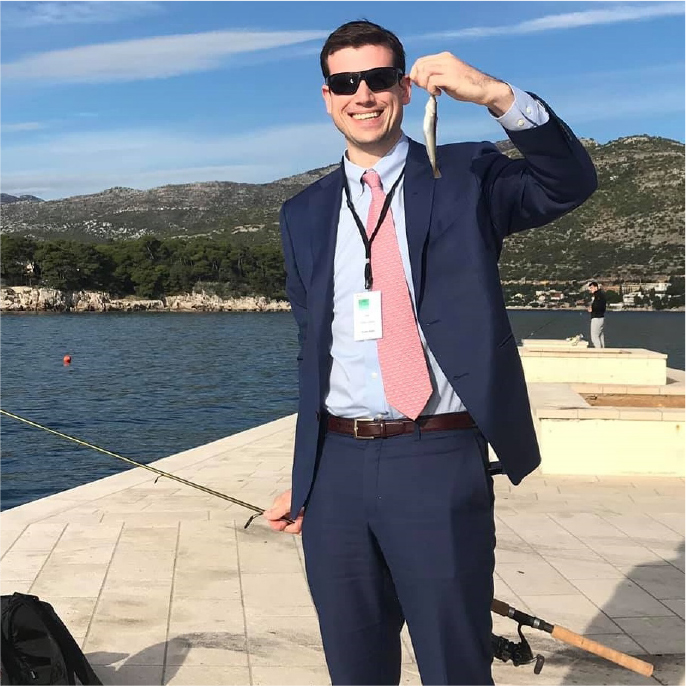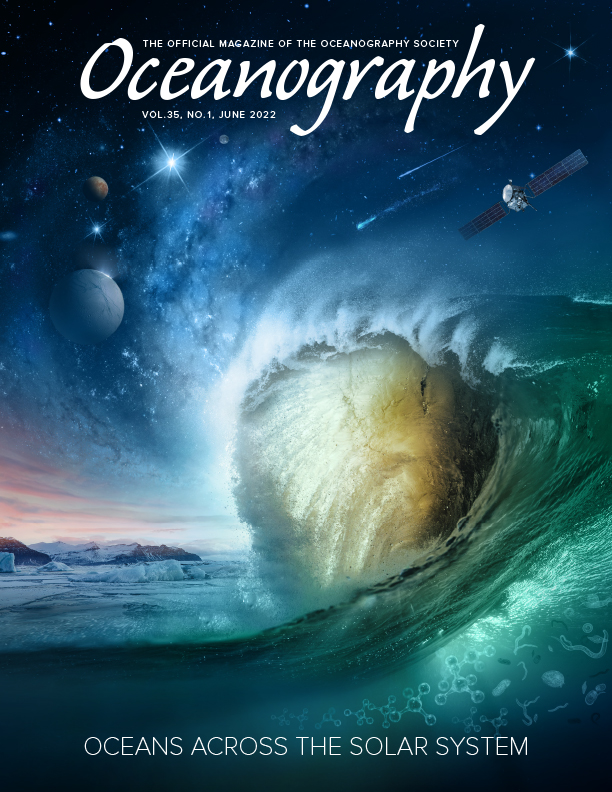Full Text
 |
WILLY GOLDSMITH, Executive Director, American Saltwater Guides Association
Degree: When, where, what, and what in?
I earned my PhD in marine science at the Virginia Institute of Marine Science (VIMS) in 2018. My dissertation focused on better characterizing the human dimensions and biological impacts of the recreational fishery for Atlantic bluefin tuna on the US East Coast. As part of my degree, I also completed a sub-concentration in marine policy.
Did you stay in academia at all, and if so, for how long?
I did not stay in academia at all after finishing my PhD, but instead moved directly into marine policy. My goal in attending graduate school had always been to gain a sturdy scientific foundation before ultimately working on policy issues. I was a history major in college, and despite being a lifelong avid angler and passionate follower of fisheries research and management, I had received little formal training in marine science in general and fisheries science in particular. I felt that having a sound understanding of the science that forms the basis of how we manage our marine resources was an important first step for being an effective contributor in the policy space.
How did you go about searching for a job outside of the university setting?
Like many graduate students interested in marine policy, during my final year of school I applied for the NOAA Sea Grant John A. Knauss Marine Policy Fellowship, which provides recent graduates with an opportunity to work in a federal executive or legislative office in Washington, DC. I had heard about the year-long fellowship from numerous individuals during graduate school—VIMS alumni, conference attendees, fishery managers, and others—who had all successfully transitioned from science into policy. I was fortunate to receive the fellowship, and after completing my PhD, I moved to Washington, DC, to work with Senator Ed Markey (D-MA).
Is this the only job (post-academia) that you’ve had? If not, what else did you do?
I have had three jobs since finishing graduate school. As I mentioned, my first position was the Knauss Fellowship with Senator Markey, where I worked on a diverse suite of energy and environmental issues ranging from fisheries policy to marine mammal conservation to global energy markets to coastal resilience. It was a whirlwind and incredibly gratifying experience, even as I had to adjust from the more deliberate pace of graduate school to the sometimes-frantic environment on Capitol Hill. Working closely with Senator Markey’s close-knit energy and environment team, I was able to engage on some topics that I was quite familiar with—recreational fisheries management, for instance—while also learning how to quickly get up to speed on issues well outside of my comfort zone, such as lightbulb efficiency standards. In addition to becoming familiar with the pace of Capitol Hill, the Knauss Fellowship offered me a unique opportunity to network with a broad variety of individuals through constituent meetings, receptions and briefings, and various events within the robust DC marine policy community.
When my fellowship concluded, I accepted a position as a senior associate with the Lenfest Ocean Program, a marine science grantmaking program managed by the Pew Charitable Trusts. In that role, also in DC, I collaborated closely with project grantees, who were conducting policy-relevant marine science research around the world, to help them engage stakeholders and effectively communicate their research to decision-makers. Because the research and peer review process often doesn’t align with the pace of policymaking, the goal was to ensure that folks were aware of ongoing science relevant to marine stewardship and conservation. We achieved this outcome through diverse outreach strategies ranging from webinars to one-on-one meetings to short fact sheets. While perhaps a step removed from direct policy work, I really enjoyed the outreach component of this position and appreciated working directly with individuals in the scientific community.
After a year at Lenfest, I began my current role with the American Saltwater Guides Association in April 2020.
What is your current job? What path did you take to get there?
I am currently the executive director of the American Saltwater Guides Association (ASGA), a nonprofit organization representing fishing guides, small fishing-related businesses, and conservation-minded anglers who believe that long-term fishery and ecosystem health are the core foundation of a strong recreational fishing economy. We engage at the state, regional, federal, and even international levels to promote science-based, resource-first fisheries management approaches, working with partners in the recreational fishing, commercial fishing, and environmental communities who share our philosophy.
The path to my current role was a quintessentially “DC” one. While completing my Knauss Fellowship with Senator Markey, a piece of legislation related to recreational fisheries management was moving through the Senate. Two recreational fishery advocates, one of whom I had previously met through my graduate research, visited our office to provide their views on the bill and contend more broadly that the priorities of the recreational fishing community were not being well represented in the halls of Congress. The three of us found that we shared similar viewpoints and stayed in close touch both during and after my fellowship. A bit later in the year, as I concluded the fellowship, they founded the American Saltwater Guides Association, and about a year later, they brought me on as their executive director.
What did your oceanographic education (or academic career) give you that is useful in your current job?
My training in fisheries science—and marine science generally—has been a huge asset in my current job. While much of our work takes the form of submitting public comment letters, meeting with managers, and engaging recreational fishery stakeholders, the ability to review a stock assessment, conduct a literature review, or even just call a colleague in the scientific community ensures that our positions align with the best available science and are in the best interests of the resource. In addition, given my ties to the scientific community, I’m able to collaborate with colleagues conducting recreational fisheries research relevant to our priorities, which serves not only to improve the state of the science but also to bolster our reputation as a science-based association.
Is there any course or other training you would have liked to have had as part of your graduate education to meet the demands of the job market?
Like most jobs, my role with ASGA has entailed a lot of “learning on the fly,” as I have to juggle tasks ranging from policy positioning to outreach to grants management to fundraising. While I did take one project management course in graduate school, some more formal training on how to plan, prioritize, and execute competing demands on my time would have been time well spent. Many individuals in the marine policy space end up wearing a lot of hats as I do, so I think the importance of project management skills can be extended to many others entering the job market.
Is the job satisfying? What aspects of the job do you like best/least?
I absolutely love my job. On an everyday basis, I have the chance to provide meaningful input on fisheries policy, learn about (and in some cases collaborate on) new and exciting science, and engage with recreational anglers who share my passion for being on the water. The wide array of issues we work on, ranging from striped bass conservation to offshore wind energy to federal fisheries legislation, means that no two days are ever alike, keeping the work fresh and exciting. One of my favorite parts of the job is coalition-building—finding common ground across diverse groups of stakeholders and in turn amplifying our collective voice to effect change. I also really enjoy our outreach work and efforts to educate and activate stakeholders, which we achieve through blogs, social media, our podcast “The Guide Post,” and variety of other means such as presentations to fishing clubs.
The more challenging parts of the job, unsurprisingly, are some of the behind-the-scenes elements that, at the end of the day, make a nonprofit run: fundraising efforts, managing grants and funding streams, and general administrative work. We are fortunate to have a small but highly dedicated team that lifts each other up and ensures that we maintain a healthy balance between the “fun” and less-fun-but-vital work.
Do you have any recommendations for new grads looking for jobs?
Network, network, network! There’s a saying in fishing—“Luck is where preparation meets opportunity”—and I think it applies equally to the job hunt. If over the course of your research, or at a conference, or even if you read an interesting article about the work someone is doing, don’t be shy about reaching out. You’ll find that many in our community are eager to tell you their stories and help out where they can. The job market is ever-shifting, and having a strong network of folks in your corner can go a long way toward ensuring that you become aware of and are well positioned for any jobs of interest. In both of my positions since my Knauss Fellowship—at Lenfest and with ASGA—I got to know the individuals who would eventually hire me over coffee before a job was even available. Of course, in the COVID world, networking has become far more difficult, but taking the initiative to chat over the phone or via Zoom with folks doing the kind of work that excites you can be well worth the effort.

